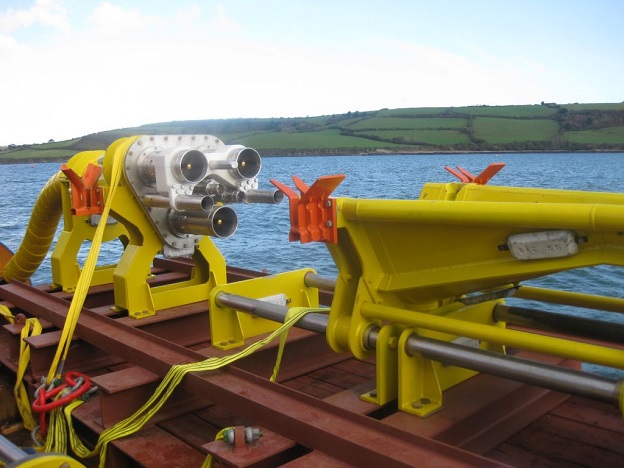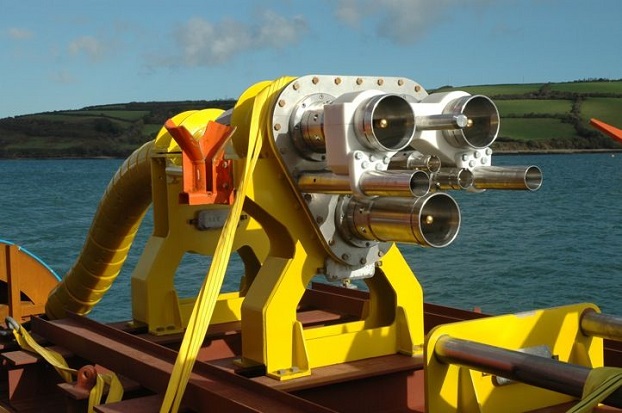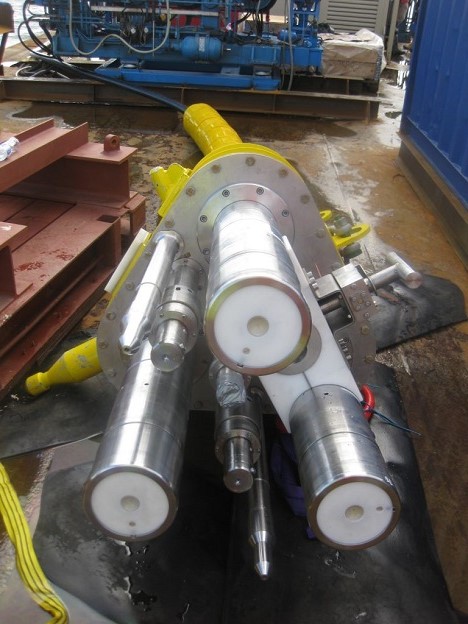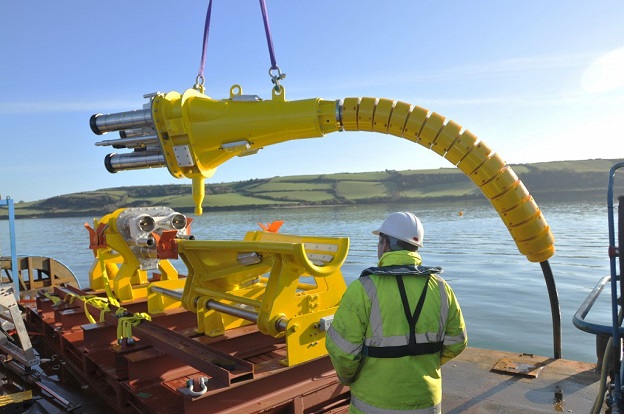
TARGET 150708
A GIANT POWER PLUG

You know all of those floating wind turbines, oil derricks at sea, underwater tide-generators, and the other things that float off-shore, either needing or creating power? Well, it is easy to assume that they have a long cord delivering power to or from shore. And, they do. But the cord isn't just connected like the one on your TV: fixed permanently to the set and a fixed length. The floating platforms need to move now and then. Also. sometimes, an extension cord is necessary.
But you can't have the cables that link them to shore floating on top of the water. That would get in the way of small boats, commercial shipping, etc. So, the cables must lay on the bottom. That poses a problem if you want to connect or disconnect one of them or add/take away an extension cord for any reason. Messing with high-voltage plugs underwater is definitely not a good idea. Going down to get the cable, lifting it to the surface, and letting it dry before messing with it would be very expensive and time-consuming, as well as very dangerous. Also, if the plugs were underwater, the water could seep in and damage everything, as well as killing all the marine life in the surrounding area.
And those platforms do need to be taken off-line now and then because of harsh weather, legal regulations, inspections, repair work, or other causes. And extension cords do need to be added or taken away every time a platform moves from one place to another.
Well, the answer is very simple. Keep the cables under the water, but the plugs out of it.

This is the MacArtney 11 kV (eleven thousand volts), 400 amp "wet mate" connector. It allows workmen to plug and unplug the platforms and underwater generating devices above water. It's called a "wet mate", but is, in fact, a way to mate and unmate the cables in dry conditions.

Just like the plugs in your home, it has two pins for power and one for grounding, in case there is a short or something cuts into the cable. Here, you see the socket or "female" part of the connector. This is the part that coincides with the socket in the wall of your home.

Here, you see the plug, or "male" part. Notice the thick amount of plastic insulation surrounding the actual wire in the middle. With up to 11 thousand volts surging through it, you definitely want some insulation between you and it. The other pins sticking out are for alignment.
MacArtney's wet mate connector shortens the time needed for connection and makes it possible to operate in waters with limited time windows. This is particularly important for renewable energy devices where changing tides or wave action are often associated with marine renewable deployments.

Here the plug (right side) is plugged into the socket (left side). The MacArtney 11kV wet mate connector provides safe and reliable connection to the power grid and addresses the fundamental challenges of having that much electrical power in and near the water. It also provides much faster and timely power maintenance and location changes for the marine installations.

Of course, the guys who work on these don't just grab them and shove them into the plugs. The weight and danger of handling them requires a hoist to lay the plug into an alignment cradle before anything is plugged in and bolted down, or when it is unbolted and removed.
I would think that rubber-sole shoes are a definite requirement for them, too.
If you got impressions for which this feedback is insufficient, more information,
pictures and videos can be found at the following web sites:
MacArtney.com
Many thanks to Ray McClure for this target.